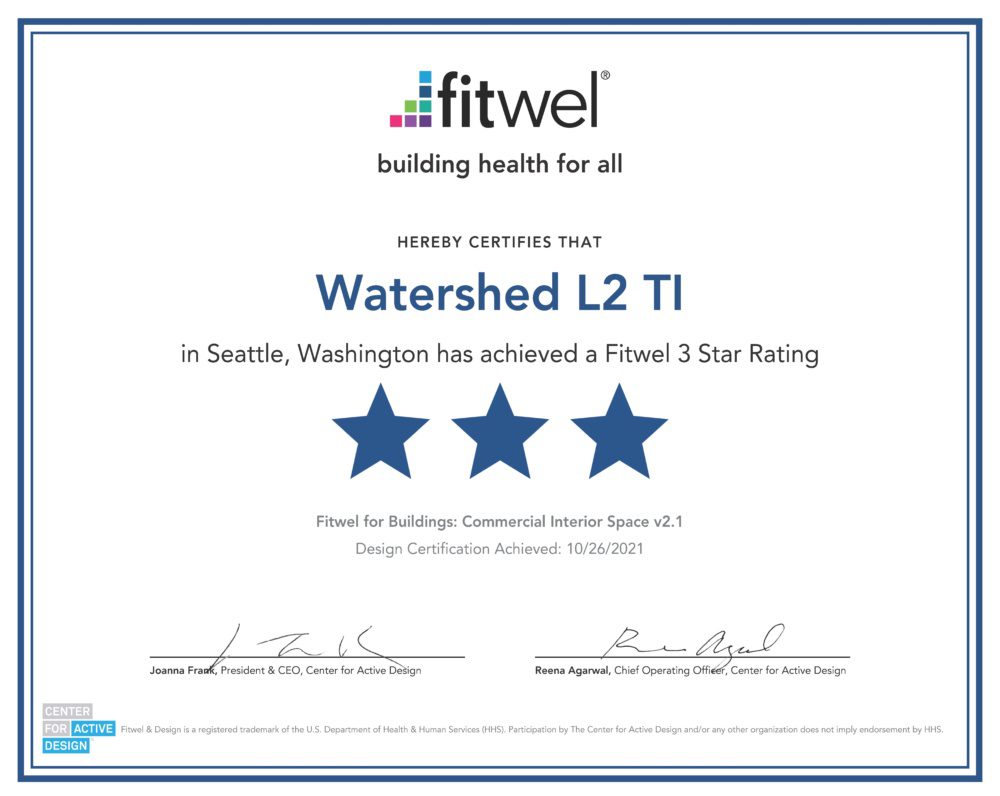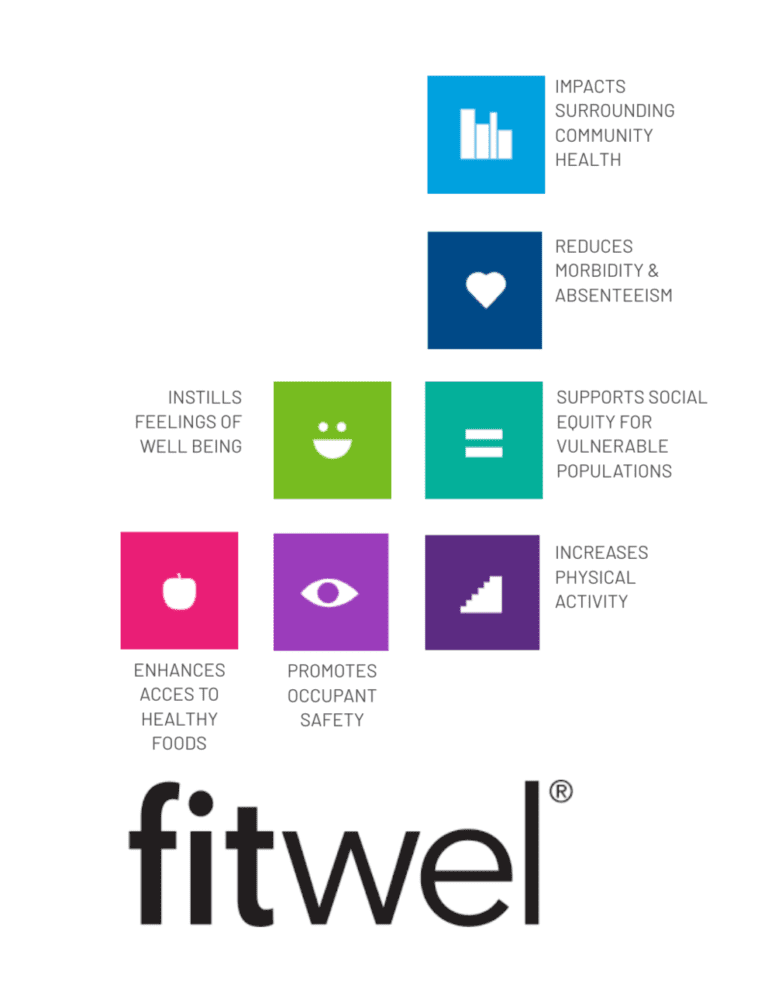By Nicole Winn
Since 1997, Nicole has worked on a wide variety of projects throughout the office. Her belief that good design comes from a solidified work method combined with continuing education led her to become part of Weber Thompson’s first wave of LEED APs and a member of the team that originated Weber Thompson’s sustainable design initiatives.

WT’s Fitwel certificate!
The Weber Thompson Offices at Watershed have officially received a 3-Star Fitwel certification! This achievement comes from a very dedicated in-house Fitwel team, who handled everything from custom signage design to researching and procuring materials for a Click and Grow indoor gardening kit. Another contributing factor is that many Fitwel requirements were already built into the space – the result of WT’s commitment to health and wellness at every level of design. The new WT office space features a central location with an impressive 96 Walk Score, a room reserved for nursing mothers, locally sourced Red-List compliant materials, and more.
Our location within Watershed helped the new WT office space achieve Fitwel certification as well – Watershed was designed to meet Seattle’s Living Building Pilot Program, which includes meeting petal certification from the Living Future Institute’s Living Building Challenge for three (3) petals. This rigorous pilot program provided a framework for nearly every decision made for the project from the core and shell building design to the design decisions in the tenant improvements.
Receiving a 3-star Fitwel rating is very exciting news for WT, but if you find yourself wondering “what exactly is Fitwel, and what does Fitwel certification entail?”, you’re not alone. The sections below break down some frequently asked questions about the certification program and how to participate.
What is Fitwel?
Fitwel was originally created by the U.S. Centers for Disease Control (CDC) and Prevention and U.S. General Services Administration. The CDC remains the research and evaluation partner for Fitwel. The Center for Active Design was selected as the licensed operator of Fitwel, charged with expanding Fitwel to the global market. Developed over five years and generated by expert analysis of over 5,600 academic research studies, Fitwel is a green building certification system that focuses on improving and enhancing the health and wellbeing of tenants and residents in office buildings, multifamily residential buildings, and retail space.
The system is accessed through a carefully designed and easy-to-use digital portal; once registered, participants use a scorecard to rate an environment’s performance across 12 categories. Categories for commercial office include:
- Location
- Building Access
- Outdoor Spaces
- Entrances and Ground floor
- Stairs
- Indoor Environment
- Workspaces
- Shared Spaces
- Water Supply
- Prepared Food Areas
- Vending Machines and Snack Bars
- Emergency Preparedness
Users can treat the scorecard as a benchmark without seeking certification, or they can shore up their performance and submit evidence-based documentation and images to support certification. Fitwel scorecards are graded on a point system, and there are 144 available points. The closer you get to the maximum number of points, the higher your star rating.

FITWEL & Design is a registered trademark of the U.S. Department of Health & Human Services (HHS). Participation by The Center for Active Design and/or any other organization does not imply endorsement by HHS. Outside the United States, the FITWEL service marks are owned by the Center for Active Design, Inc.
What does it cost to become Fitwel certified?
There is a $500 registration fee that gains participants access to the Fitwel portal. The certification fee depends on the size of the building:
- 0 – 49,999 square feet: $5,500
- 50,000 – 99,999 square feet: $6,000
- 100,000 – 249,999 square feet: $6,500
- 250,000 – 499,999 square feet: $7,000
- 500,000 – 749,999 square feet: $7,500
- 750,000 – 999,999 square feet: $8,000
- Above 999,999 square feet: Time to talk to a human at Fitwel
The only mandatory costs that are associated with Fitwel are the certification fee and the registration fee.
How long does Fitwel certification last?
The Fitwel certification is valid for three years. After three years, a project must re-submitted for certification and will be charged a re-registration fee plus 80% of the current certification rate.
Are Fitwel-certified buildings publicly listed?
There is a project directory listing all of the performance data on Fitwel-Certified projects located on the Fitwel website.
Does a building have to be a new to achieve Fitwel certification?
New Construction and renovation projects can pursue Fitwel certification through the New Construction pathway. This is available to projects pre-occupancy. Once occupied, project teams will have the opportunity to pursue a Built Certification. New construction projects must first submit for a Design Certification (pre-occupancy), and then a Built Certification (post-occupancy). Existing or recently completed buildings can pursue certification through the existing buildings pathway and will receive a Built Certification.
Older buildings can present their own challenges when seeking Fitwel certification. Much older properties were often not built with the health and wellness of tenants in mind, and can lack modern amenities. These also tend to be properties where it’s not realistic to change the design of the building enough to meet every Fitwel criteria.
This doesn’t mean that older buildings shouldn’t submit for a certification. A large portion of the Fitwel strategies and categories are related to the design and structure of a building. Though an older building may have a bigger challenge, age is not a disqualifier.
